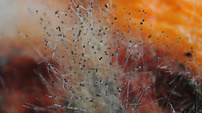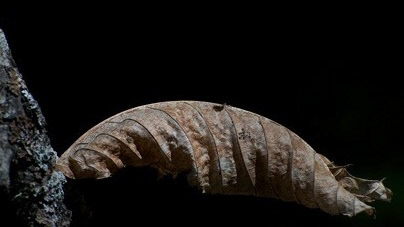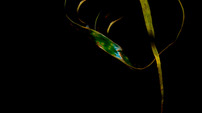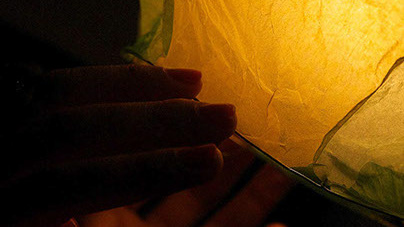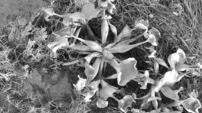The presence of skylights in the urban area of Oporto
Although generically known by its abundance in the city of Porto, the beauty of forms and diversity of the skylight remain unrecognized. Despite some few technical studies and loosen elements in the universe of photographic, pictorial or poetic imagery the presence of the skylight in the urban area of Porto has not deserved great attention.
This patrimony element is of such importance to the characterization of the bourgeois urban development of the 19th century Porto, that took the authors to promote the publication of this work of aesthetical nature and which was initiated 30 years ago by the photographer Paulo Gaspar Ferreira.
The images created then reflect the photographer’s attention to the plastic interpretation he wished to use in this work. Any idea of inventory or the simple recording of the immense ‘population’ of skylights that exists in the city of Porto was completely revoked. On the contrary, the intention was to present a work that would cope peacefully with an approach which objective would be closer to a tribute, to dignify this patrimony that is still so unrecognized. This lack of knowledge is owed to the definition of skylight itself that ‘nests’ in the roofs of the houses that well characterize the urban development of Porto in the 19th century. These houses are of slim and tall construction in narrow streets. These circumstances concur so that the skylight ‘inhabits’ locals mostly inaccessible to the sight.
Also inaccessible is their other part, the interior
Beautiful and meticulous architect works, but also of plasterer, locksmith, blacksmith and glassblower become together to design intimate environments of light, shared only by those who inhabit the interior of these houses so typically ‘tripeiras’ (nickname for a person born in Porto). One should add the concern for the quick disappearing of numerous exemplars which turn out to be inconvenient to the owners. The lack of efficient regulations capable of protecting this treasure, which is probably unique in the world, feeds this massive dismantling.
The recent encounter with the Brazilian photographer Luciana Bignardi, whom these days was also dedicated to the same artistic objectives and finding herself producing images of identical demanding quality requisites on what concerns the art of photography, gave continuity and dynamics to the construction of this project, now common.
________________________________ ƒ ________________________________
A presença da clarabóia no tecido urbano portuense
Embora genericamente conhecida pela sua abundância na cidade do Porto a clarabóia é, ainda hoje, muito ignorada tanto no que diz respeito à sua beleza de forma como à sua diversidade. Na verdade, a presença da clarabóia no tecido urbano portuense, não tem sido digna de grande atenção à parte alguns poucos estudos de índole tecnológica e um ou outro elemento solto no universo da imagem fotográfica, pictórica ou poética.
Este elemento patrimonial de tão grande importância principalmente na caracterização do crescimento urbano burguês do séc XIX portuense, levou os autores a promoverem a publicação de um trabalho de cariz esteticista [CG1] iniciado há 30 anos pelo fotógrafo Paulo Gaspar Ferreira. As imagens então criadas, reflectiam a atenção do fotógrafo à vertente de interpretação plástica com que queria abordar o trabalho. De todo estava afastada qualquer ideia de inventariação ou simples registo da imensa "população" de clarabóias existente ao tempo na urbe portuense. Pelo contrário, pretendia-se apresentar trabalho que convivesse pacificamente com uma abordagem em que o objectivo fosse mais próximo de um tributo, de uma dignificação daquele património, ainda hoje, tão ignorado. Este desconhecimento deve-se à própria definição da clarabóia que "nidifica" no telhado das casas que tanto caracterizam o desenvolvimento urbano do Porto do séc XIX. São de construção esguia, alta e implementadas em ruas estreitas. Estas circunstâncias concorrem para que a clarabóia "habite" locais, a maior parte das vezes, inacessíveis ao olhar.
Também inacessível está a sua outra parte, a de dentro
Belíssimos e cuidados trabalhos de arquitecto mas também de estucador, de serralheiro, ferreiro e vidraceiro se unem para desenhar íntimos ambientes de luz, partilhados apenas por quem habita o interior destas casas tão tipicamente tripeiras. Acrescente-se a preocupação pelo rápido desaparecimento através da destruição de numerosos exemplares que se revelam incómodos aos proprietários. Alimenta este desmantelamento massivo a inexistência de regulamentação eficaz que proteja a manutenção deste tesouro, provavelmente único no mundo.
O recente encontro com a fotógrafa brasileira Luciana Bignardi, que se dedicava hoje em dia aos mesmos objectivos artísticos encontrando-se, também ela, a produzir imagens com idênticos requisitos de exigente qualidade no que respeita à arte fotográfica, deu continuidade e dinâmica à construção deste projecto, agora comum.
